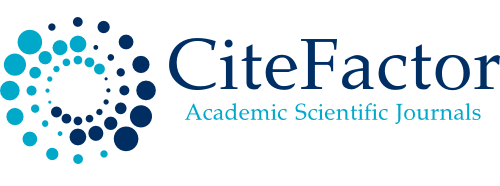EXECUTIVE FUNCTIONING IN PATIENTS WITH ALCOHOL DEPENDENCE BEFORE AND AFTER MEDITATIVE PRACTICES
DOI:
https://doi.org/10.61841/7eaq1d59Keywords:
Patients with Alcohol dependence, Executive Functioning and MeditationAbstract
There is asignificant need for research regarding the impact of meditative practices on executive functioning. The present study conducted to see the effect of meditative practices on executive functioning. Executive functioning is related to the higher cognitive functioning of the brain which includes attention, problem solving ability, abstract reasoning as well as its ability to organize information to working memory. As we know who have a dependence on alcohol shown impairment in a wide array of executive functioning such as problem solving, verbal fluency, cognitive flexibility, information sequencing and working memory. It tends to affect the quality of life and occupational functioning. In most of the studies found that meditation has a positive effect on the executive functioning such as making planning, attentional capacity and enhance cognitive flexibility. This study assessed the effect of meditation on executive functioning in patients with alcohol dependence. This study comprised20 alcohol patients, in whom 10 patients belonged to an experimental group and 10 patients belonged to treatment as usual group. After the initial screening by the clinical assessment based on their amenability for the interview, a tool for the executive functioning (Wisconsin Card Sorting Test) applied to the patients. Experimental group of patients received one week meditation but treatment as usual group did not receive any therapy. After one week again both group assessed on the tool of executive functioning (Wisconsin Card Sorting Test). This study found that meditation has a positive effect on executive functioning.
Downloads
References
1. Atkinson, R. M. (1990). Aging and alcohol use disorders: Diagnostic issues in the elderly. International Psychogeriatrics, 2(1), 55-72.
2. Baer, R. A. (2011). Measuring mindfulness. Contemporary Buddhism, 12(1), 241-261.
3. Baer, R. A., Smith, G. T., Hopkins, J., Krietemeyer, J., & Toney, L. (2006). Using self-report assessment methods to explore facets of mindfulness. Assessment, 13(1), 27-45.
4. Barry, D., & Petry, N. M. (2008). Predictors of decision-making on the Iowa Gambling Task: Independent effects of lifetime history of substance use disorders and performance on the Trail Making Test. Brain and cognition, 66(3), 243-252.
5. Bechara, A. (2005). Decision making, impulse control and loss of willpower to resist drugs: a neurocognitive perspective. Nature neuroscience, 8(11), 1458-1463.
6. Bechara, A., Dolan, S., & Denburg, N. Hindes. A., Anderson, SW, & Nathan, PE (2001). Decision- making deficits, linked to a dysfunctional ventromedial prefrontal cortex, revealed in alcohol and stimulant abusers. Neuropsychologia, 39(4), 376-389.
7. Berg, E. A. (1948). A simple objective technique for measuring flexibility in thinking. The Journal of general psychology, 39(1), 15-22.
8. Bloomfield, Kim, Allaman Allamani, François Beck, K. Helmersson Bergmark, Ladislav Csemy, Irmgard Eisenbach-Stangl, Zsuzsanna Elekes et al. "Gender, culture and alcohol problems: a multi- national study." Project Final Report (2005).
9. Bucholz, K. K., Cadoret, R., Cloninger, C. R., Dinwiddie, S. H., Hesselbrock, V. M., Nurnberger Jr, J. I.,
... & Schuckit, M. A. (1994). A new, semi-structured psychiatric interview for use in genetic linkage studies: a report on the reliability of the SSAGA. Journal of studies on alcohol, 55(2), 149-158.
10. Buddhaghosa, B. (1975). The path of purification: Visuddhimagga. Pariyatti.
11. Caldwell, T. M., Rodgers, B., Clark, C., Jefferis, B. J. M. H., Stansfeld, S. A., & Power, C. (2008). Lifecourse socioeconomic predictors of midlife drinking patterns, problems and abstention: findings from the 1958 British Birth Cohort Study. Drug and alcohol dependence, 95(3), 269-278.
12. Casswell, S., Pledger, M., & Hooper, R. (2003). Socioeconomic status and drinking patterns in young adults. Addiction, 98(5), 601-610.
13. Chalder, M., Elgar, F. J., & Bennett, P. (2006). Drinking and motivations to drink among adolescent children of parents with alcohol problems. Alcohol and Alcoholism, 41(1), 107-113.
14. Cotton, N. S. (1979). The familial incidence of alcoholism: a review. Journal of studies on alcohol, 40(1), 89-116.
15. Crum, R. M., Bucholz, K. K., Helzer, J. E., & Anthony, J. C. (1992). The risk of alcohol abuse and dependence in adulthood: the association with educational level. American Journal of Epidemiology, 135(9), 989-999.
16. Dolan, S. L., Bechara, A., & Nathan, P. E. (2008). Executive dysfunction as a risk marker for substance abuse: the role of impulsive personality traits. Behavioral sciences & the law, 26(6), 799-822.
17. Flannery, B. A., Roberts, A. J., Cooney, N., Swift, R. M., Anton, R. F., & Rohsenow, D. J. (2001). The role of craving in alcohol use, dependence, and treatment. Alcoholism: Clinical and Experimental Research, 25(2), 299-308.
18. Goldstein, J. (1976). The experience of insight: A natural unfolding, Santa Cruz.
19. Goleman, D., & Horne, J. R. (1980). The varieties of the meditative experience.
20. Grant, B. F., & Dawson, D. A. (1997). Age at onset of alcohol use and its association with DSM-IV alcohol abuse and dependence: results from the National Longitudinal Alcohol Epidemiologic Survey. Journal of substance abuse, 9, 103-110.
21. Grant, B. F., Dawson, D. A., Stinson, F. S., Chou, S. P., Dufour, M. C., & Pickering, R. P. (2004). The 12-month prevalence and trends in DSM-IV alcohol abuse and dependence: United States, 1991–1992 and 2001–2002. Drug and alcohol dependence, 74(3), 223-234.
22. Grant, D. A., & Berg, E. (1948). A behavioral analysis of degree of reinforcement and ease of shifting to new responses in a Weigl-type card-sorting problem. Journal of experimental psychology, 38(4), 404.
23. Grant, S., Contoreggi, C., & London, E. D. (2000). Drug abusers show impaired performance in a laboratory test of decision making. Neuropsychologia, 38(8), 1180-1187.
24. Hussong, A. M., Curran, P. J., & Chassin, L. (1998). Pathways of risk for accelerated heavy alcohol use among adolescent children of alcoholic parents. Journal of abnormal child psychology, 26(6), 453-466.
25. Kabat-Zinn, J. (1994). Where you go, there you are: Mindfulness meditation in everyday life. New York, NY: Hyperion. Laranjo, J., Bernier, A., & Meins, E.(2008). Associations between maternal mind- mindedness and infant attachment security: Investigating the mediating role of maternal sensitivity. Infant Behavior and Development, 31, 688-695.
26. Kabat‐Zinn, J. (2003). Mindfulness‐based interventions in context: past, present, and future. Clinical psychology: Science and practice, 10(2), 144-156.
27. Kiyota, M. (1978). Buddhist Devotional Meditation: A Study of the Sukhavativyuhopadesa. Mahayana Buddhist Meditation: Theory and Practice, 249-296.
28. Kubose, S. K. (1976). An experimental investigation of psychological aspects of meditation. Psychologia: An International Journal of Psychology in the Orient.
29. Kuntsche, E., Rehm, J., & Gmel, G. (2004). Characteristics of binge drinkers in Europe. Social science & medicine, 59(1), 113-127.
30. LaBrie, J. W., Feres, N., Kenney, S. R., & Lac, A. (2009). Family history of alcohol abuse moderates effectiveness of a group motivational enhancement intervention in college women. Addictive behaviors, 34(5), 415-420.
31. Leeman, R. F., Fenton, M., & Volpicelli, J. R. (2007). Impaired control and undergraduate problem drinking. Alcohol and Alcoholism, 42(1), 42-48.
32. Linden, W. (1973). Practicing of meditation by school children and their levels of field dependence- independence, test anxiety, and reading achievement. Journal of Consulting and Clinical Psychology, 41(1), 139.
33. Luria, A. R. (1980). Disturbances of higher cortical functions with lesions of the frontal region. In Higher cortical functions in man (pp. 246-365). Springer, Boston, MA.
34. Lutz, A., Slagter, H. A., Dunne, J. D., & Davidson, R. J. (2008). Attention regulation and monitoring in meditation. Trends in cognitive sciences, 12(4), 163-169.
35. Malinowski, P. (2013). Neural mechanisms of attentional control in mindfulness meditation. Frontiers in neuroscience, 7, 8.
36. Marlatt, G. A., Hayes, S. C., Jacobson, N. S., Follette, V. M., & Dougher, M. J. (1994). Acceptance and change: Content and context in psychotherapy.
37. Milner, B. (1995). Aspects of human frontal lobe function.
38. Milner, B., & Petrides, M. (1984). Behavioural effects of frontal-lobe lesions in man. Trends in Neurosciences, 7(11), 403-407.
39. Myers, J. K., Weissman, M. M., Tischler, G. L., Holzer, C. E., Leaf, P. J., Orvaschel, H., ... & Stoltzman,
R. (1984). Six-month prevalence of psychiatric disorders in three communities: 1980 to 1982. Archives of General psychiatry, 41(10), 959-967.
40. Pullen, L. M. (1994). The relationships among alcohol abuse in college students and selected psychological/demographic variables. Journal of alcohol and Drug education.
41. Rosin, A. J., & Glatt, M. M. (1971). Alcohol excess in the elderly. Quarterly Journal of Studies on Alcohol, 32(1), 53-59.
42. Schoenbaum, G., & Shaham, Y. (2008). The role of orbitofrontal cortex in drug addiction: a review of preclinical studies. Biological psychiatry, 63(3), 256-262.
43. Seaman, P., & Ikegwuonu, T. (2010). Young people and alcohol: Influences on how they drink. York: Joseph Rowntree Foundation.
44. Singh, J., Singh, G., Mohan, V., & Padda, A. S. (2000). A comparative study of prevalence of regular alcohol users among the male individuals in an urban and rural area of distt. Amritsar, Punjab. Indian J Community Med, 25(2), 73-8.
45. Stuss, D. T., & Benson, D. F. (1984). Neuropsychological studies of the frontal lobes. Psychological bulletin, 95(1), 3.
46. Turnbull, J. E. (1994). Early background variables as predictors of adult alcohol problems in women. International journal of the addictions, 29(6), 707-728.
47. Verdejo-García, A., Bechara, A., Recknor, E. C., & Perez-Garcia, M. (2006). Executive dysfunction in substance dependent individuals during drug use and abstinence: an examination of the behavioral, cognitive and emotional correlates of addiction. Journal of the International Neuropsychological Society: JINS, 12(3), 405.
48. Warner, L. A., White, H. R., & Johnson, V. (2007). Alcohol initiation experiences and family history of alcoholism as predictors of problem-drinking trajectories. Journal of studies on alcohol and drugs, 68(1), 56-65.
49. Wenk-Sormaz, H. (2005). Meditation can reduce habitual responding. Alternative therapies in health and medicine, 11(2), 42-59.
50. Zeidan, F., Johnson, S. K., Diamond, B. J., David, Z., & Goolkasian, P. (2010). Mindfulness meditation improves cognition: Evidence of brief mental training. Consciousness and cognition, 19(2), 597-605.
Downloads
Published
Issue
Section
License

This work is licensed under a Creative Commons Attribution 4.0 International License.
You are free to:
- Share — copy and redistribute the material in any medium or format for any purpose, even commercially.
- Adapt — remix, transform, and build upon the material for any purpose, even commercially.
- The licensor cannot revoke these freedoms as long as you follow the license terms.
Under the following terms:
- Attribution — You must give appropriate credit , provide a link to the license, and indicate if changes were made . You may do so in any reasonable manner, but not in any way that suggests the licensor endorses you or your use.
- No additional restrictions — You may not apply legal terms or technological measures that legally restrict others from doing anything the license permits.
Notices:
You do not have to comply with the license for elements of the material in the public domain or where your use is permitted by an applicable exception or limitation .
No warranties are given. The license may not give you all of the permissions necessary for your intended use. For example, other rights such as publicity, privacy, or moral rights may limit how you use the material.









